There’s no denying that WordPress is the most popular content management system in the world. But that’s just one of many impressive WordPress statistics. What started off as a personal project is now an integral part of the Internet’s architecture, powering hundreds of millions of websites.
While you’re probably already familiar with the CMS, there might be some things about WordPress that you are not aware of. The following numbers on WordPress usage will shine a light on how popular the platform really is.
Prepare to feel baffled.
WordPress Usage Statistics That Will Make Your Jaw Drop
As we are sure you will soon agree, the stats below are short of impressive. To paint as accurate a picture as possible, we tried to include the most current statistics. If not stated otherwise, all numbers are from 2021.
1. WordPress powers over 40 percent of the entire Internet.
Let’s start with one of the most quoted WordPress statistics. As already stated in the beginning, the platform is by far the most popular CMS on the web. However, you might not be aware just how ubiqitous it has become.
First of all, its market share among all content management systems is over 65 percent. What’s more, the closest competitor, Shopify, only makes it to around 6%. Yes, that’s the second most popular content management system in the world!
Wix and Joomla, the runner-ups, themselves only have a market share of less than 3%.
The bigger surprise, however, and by far the most impressive WordPress usage statistic is that over 40% of all websites now use WordPress. With nearly two billion websites online today, I’ll let you do the math on how many in total that is. I know, I was as surprised as you are!
2. WordPress sites around the world publish 70 million new posts per month.
You read that right. Blogs that are part of the WordPress network (meaning blogs hosted either on WordPress.com or externally-hosted WordPress sites that have the Jetpack plugin installed) publish on average 27 blog posts per second. That comes down to 1,620 blog posts per minute, nearly 97k in an hour and 2.3 million per day. And that’s not counting those sites for which WordPress cannot collect any statistics.
To get a better impression of what this looks like, WordPress.com offers a real-time map that lets you see updates around the world as they happen.
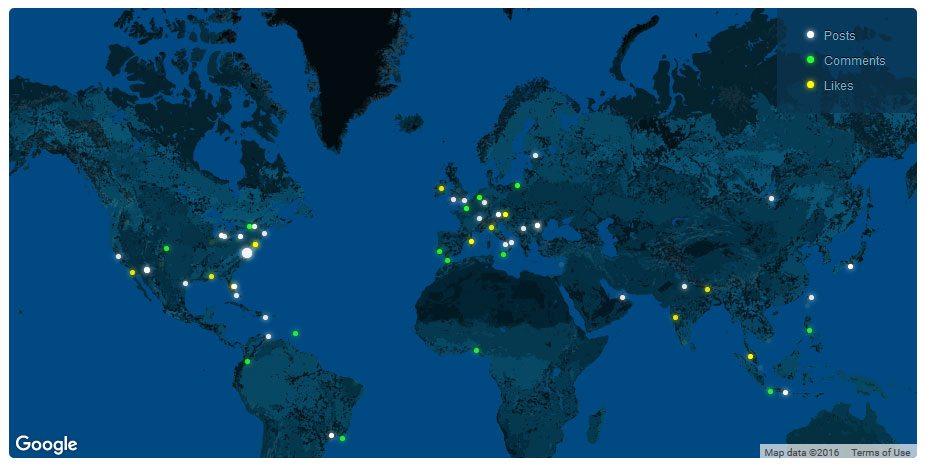
3. WordPress sites receive 20+ billion monthly pageviews.
It appears that all of that activity is paying off, resulting in massive traffic. For this year alone, blogs in the WordPress network have garnered a combined average of over 20 billion pageviews per month. That’s nearly three times as many as there are people on the planet! Let that sink in for a minute.
4. WordPress blogs receive 77 million comments per month.
And man are those visitors a talkative bunch. Each month of this year produced on average 77 million comments. Looks like there are some fierce discussions going on out there. Plus, these are only legitimate comments that made it through the spam protection, mind you.
If the Akismet stats are any indication, the number of spam comments generated at the same time is about 30 times higher. That means besides the legitimate comments WordPress blogs receive every month, they get bombarded by 1.4 billion spammers at the same time. Jeez!
5. There are 2.7 million global monthly searches for WordPress.
Seeing the amount of data WordPress.com alone can handle, it is unsurprising that WordPress is so popular and continues to garner attention. The platform’s growing esteem is also reflected in its Google searches.
In the United States alone, “WordPress” as a keyword receives 450,000 search requests every month. Globally that number is up to 2.7 million. That’s not even taking into account people looking for “WordPress templates,” “WordPress plugins,” and so on. Overall, WordPress-related terms (including those for “wp,” a common abbreviation for WordPress) receive somewhere between 10 and 100 million global searches every month.
As for how the platform stacks up against its competitors: Google Trends sees WordPress several times more popular than Joomla and Drupal. Seems like the WordPress usage statistics will only continue to grow.
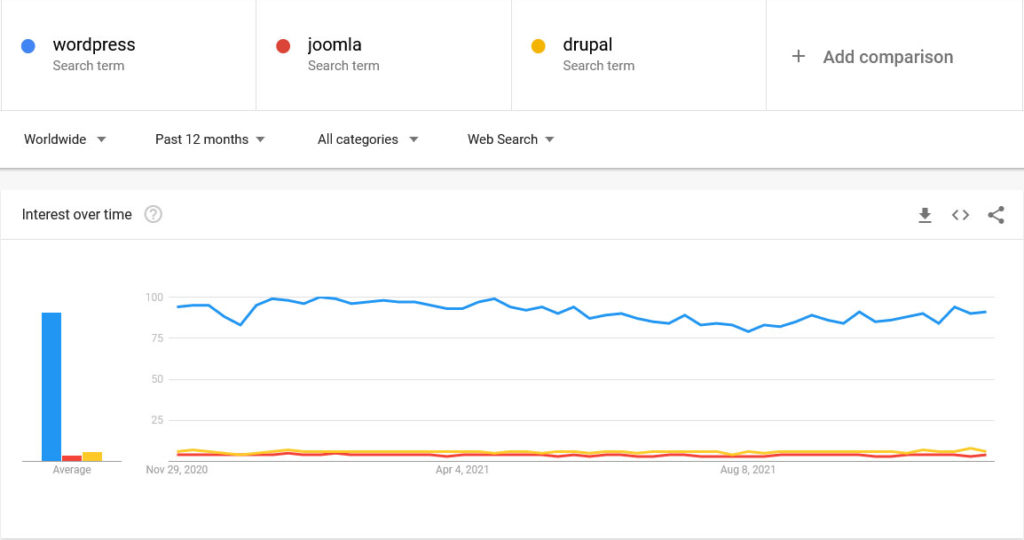
6. WordPress 5.8 has been downloaded 75+ million times.
Thanks to the large community and the work of a multitude of volunteer contributors, WordPress’ latest iteration alone, WordPress 5.8 “Tatum”, has seen 70 million downloads and counting.
To get an impression of just how quickly this number grows, watch the handy download counter. And it doesn’t stop here: WordPress’s next major release is scheduled for December 2021.
7. 49% of hacked WordPress sites are out of date.
In the past, WordPress has often made headlines due to hacked sites and security concerns. It’s something that the makers try hard to address quickly with new and improved versions. Yet, a lot of security is also on the user, which is why you should learn how WordPress sites get hacked and what to do about it.
However, not all WordPress users share this approach. While download numbers for the latest version are impressive, overall there are a lot of outdated sites running with WordPress out there. In Sucuri’s 2019 Hacked Websites Trends, they revealed that nearly half of all hacked websites were out of date.
The picture which WordPress.org paints is much the same. According to their data, the percentage of WordPress users running their site on the latest version is only 50%. If you don’t want to become a statistic, you should learn about WordPress auto updates.
8. There are 200+ translations of WordPress.
Thanks to the vast community and initiatives like the WordPress Global Translation Day, the number of languages which WordPress is available in is steadily growing. From Albanian, Dutch and Japanese all the way to Icelandic, Persian and even Scottish Gaelic, you can set your WordPress dashboard to (almost) any language you like.
While not all languages in this list are anywhere near complete, the global dedication to this cause is very impressive.
In 2014, non-English downloads already surpassed English downloads, a number that has likely increased in the many years since. That means that by now many plugins and features first appear in another language and are translated into English instead of the other way around.
As these statistics suggest, this focus on multi-language support opens up opportunities for WordPress users worldwide. Plus, don’t worry if your preferred language is not available yet (though what more than Scottish Gaelic can you want?), as WordPress contributors are constantly working on expanding the list of WordPress translations. Of course, contributions from other users (like you) are always welcome!
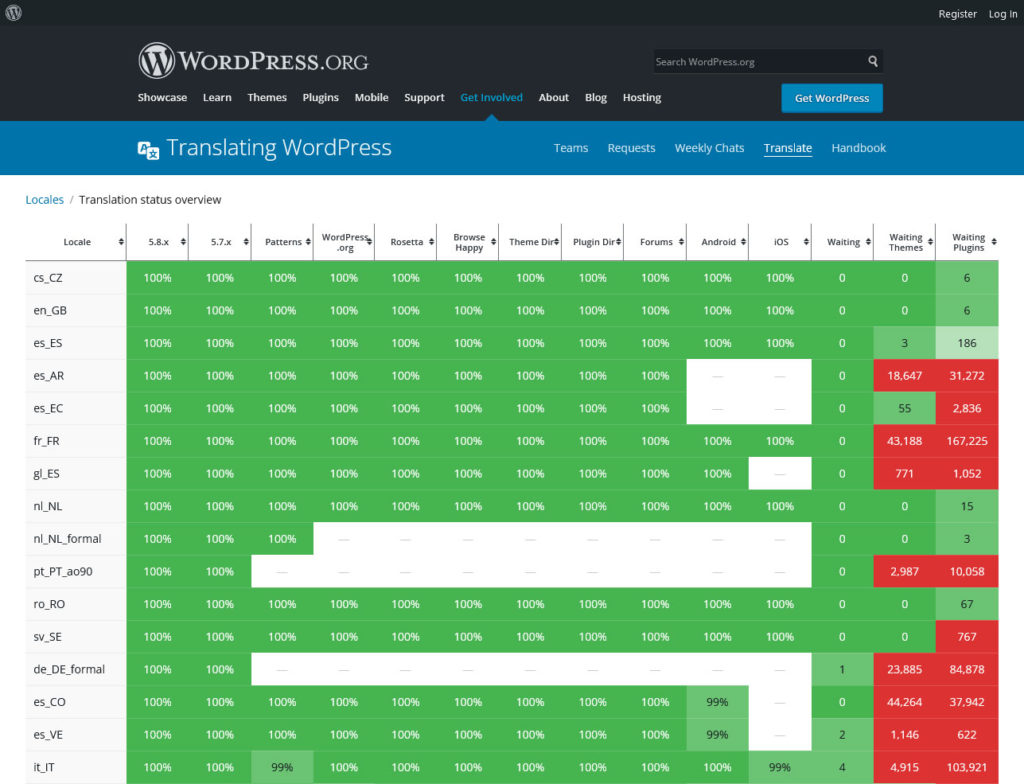
9. There are more than 59,000 WordPress plugins.
One of the main reasons WordPress is ahead of many other platforms is its extendability. Plugins are available for all means and purposes. Whatever feature you would like on your website, in most cases you will find a plugin which can do just that.

WordPress.org’s plugin database is well on the way to breaching 60k and beyond. While this is a far cry from the online stores of Apple and Google, over a billion downloads are still reason to celebrate.
10. Yoast SEO is the #1 downloaded plugin.
It’s not easy to come out as the winner in a field of 59,000 contenders. Yet with more than 375 million downloads, Yoast SEO, the popular SEO plugin, has done just that.
In second place we currently find Jetpack (253 million downloads) and third Akismet (222 million downloads), two other WordPress household names.
11. 142 WordCamps in 49 countries with more than 36,000 participants in 2019.
With WordPress steadily on the rise, it’s no surprise that the WordPress community is also steadily growing. Probably nothing exemplifies this more than the increasing number of WordCamps in the world.
In 2019 we saw 142 WordCamps organized in 49 countries on all six continents. Over 46,000 people attended, and they were able to watch more than 2,700 unique speakers on stage.
Things took a different turn in 2021; with many events in the world turning virtual, WordCamp was no exception. It attracted 3000 attendants each just in Europe and the US. The numbers may be smaller, but it’s a success for a totally new event format.
By the way, that’s not even counting the numerous WordPress meetups happening all over the world. If you are interested in learning more about WordCamps, read our report from WordCamp Europe 2021.
12. There have been 1000+ WordCamps in 65 countries since 2006.
Another impressive statistic about WordCamps: the sheer number of them there have been in only 15 years.
The very first WordCamp happened in San Francisco back in 2006, and year by year WordPress slowly grew in popularity and that number exploded. We’re now up to 1098 WordCamps, 374 cities, and 65 countries.
The US and Europe have been the major hotspots for WordCamp activity, with 520 events hosted in the US and 305 in Europe.
13. WordPress is most popular with the business, education, and entertainment industries.
Among the top WordPress sites, the lion’s share of those are related to a few popular industries, with business being the most common theme. Behind that you’ll find education and entertainment websites, along with the “people” category dedicated to specific personalities.
Given the fact that the online marketing world raves about WordPress, this is not all that surprising. The content management system is among the topics marketers most love to blog about. Keywords related to WordPress also tend to have very high competition in search engine advertising.
14. WordPress powers 10.57% of the top 10,000 websites.
The WordPress platform may be known as a great tool for beginners and personal blogs, but it’s expanded its sphere of influence far beyond this.
WordPress now powers nearly 11% of the top 10,000 websites in the world as determined by Alexa. 76% of these websites use no CMS or are unknown, and the runner-up to WordPress is Drupal with only 2.3% of the top sites.
As for the top 1,000 websites, WordPress is still first place among CMSes with a market share of 4.4%.
It goes to show that WordPress is good enough for even the giants on the web.
15. WooCommerce powers 28% of all ecommerce sites and 3% of the top 1 million.
If you’ve heard of WordPress, chances are you know of WooCommerce. The wildly popular WordPress ecommerce plugin is the go-to for most shops and a major reason why many people choose WordPress in the first place.
It’s little surprise, then, that WooCommerce powers nearly 30% of the top one-million ecommerce sites — eclipsing even Shopify, which stands at only 21%. In the entire Internet, it runs over 24%.
A vast majority of ecommerce sites are still using their own technologies, but in a few years, WooCommerce may have surpassed this number just as WordPress surpassed non-CMS websites.
16. The top-selling WordPress theme has made over 25 million dollars.
One of the most impressive WordPress monetary statistics. Avada hit the ground running when it first released in 2012, garnering a million sales in under a year. Since then it’s only picked up speed, and as of 2019 sold its 500,000th license.
Upon reaching that milestone, it had made twenty five million dollars in revenue. And not only is it #1, it completely blows second place out the water, with it having only under 250k sales.
Today the number of sales stands at over 700,000, so you can imagine how much more it’s pulled in at this point. And there are other highly successful WordPress businesses like that.
17. Since 2020, there are more WordPress sites than sites without a CMS.
Before CMSes took off in popularity, a vast majority of websites were built from the ground up, and it was pretty much impossible to create a website without the help of a developer.
With the advent of WordPress, all that changed. Making a blog or even starting a small business is now accessible to almost anyone. As of late 2020, there are now more WordPress sites than sites with no CMS. And the trend is only coasting upward from there.
18. WordPress sites make up 45% of search engine results.
Whether it speaks of WordPress’ great SEO optimization capabilities, or simply how versatile the CMS is, the data is clear: WordPress makes up 45% of all search engine results.
This is only while excluding sites without a CMS, mind you; if you include those sites, they make up 59% of the results and WordPress ranks far lower. Still, WordPress is the clear winner here among CMSes.
19. 400+ million people visit WordPress pages every month.
It seems your average visitor is quite the avid reader; a whopping 409 million people view 20 billion pages per month. That means each person reads just under 49 pages during that time. It’s not surprising, since people spend quite a lot of time on the Internet, and WordPress is so widespread.
20. There are at least 30 million sites using WordPress.
Monitoring the internet is no easy task, and it’d be truly impossible to get an accurate number of exactly how many WordPress sites are out there. That said, billions of websites have been crawled, and just how many of them are built on WordPress will shock you.
Over 30 million sites use WordPress, and that’s just the ones that are still live and accessible to BuiltWith. There are very likely tens of millions more, a truly staggering number.
21. WordPress has 100+ contributors and 40k+ commits on Github.
WordPress is a pretty big project. As it’s open source, you can view its Github repository and take an in-depth look at all the code.
Despite the smaller number of contributors relative to similar-scale projects, WordPress has over 40k commits. To explain, every time a contributor changes something or adds a feature, GitHub logs it as a commit.
For comparison, React’s Github repository — the Javascript library that powers Facebook — has several thousand contributors but only 14k commits.
WordPress developers are nothing if not dedicated!
Here’s to More Impressive WordPress Statistics to Come
WordPress has taken the online world by storm. The importance of the platform is increasing with every year as more and more people use it as their go-to solution for building websites. Currently there is no end in sight and no reason why this development shouldn’t continue. If you ever asked yourself whether investing in your WordPress skills is a waste of time, you can put these doubts safely to rest.
What other interesting statistics about WordPress have you read or heard of? Did any of above surprise you? Let us know in the comment section below!

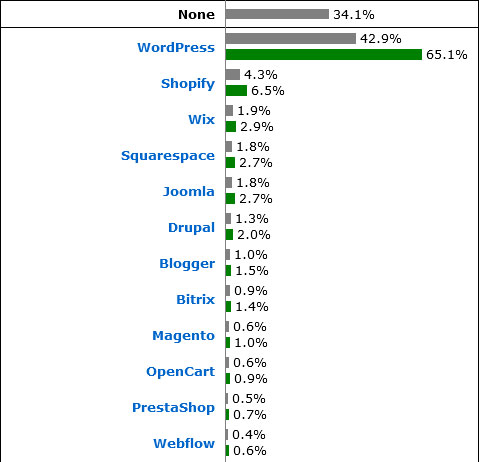
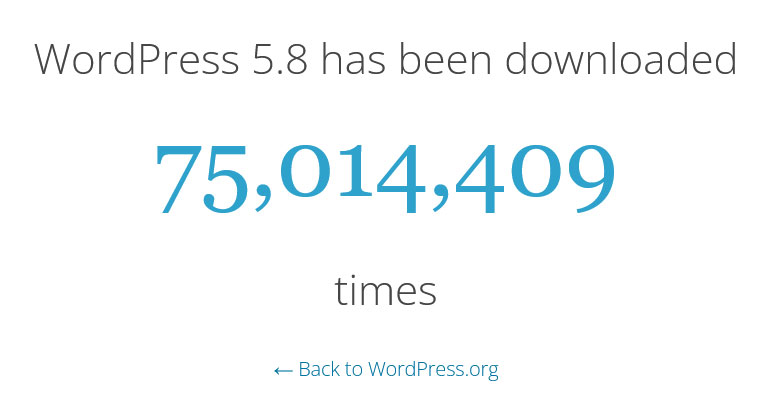
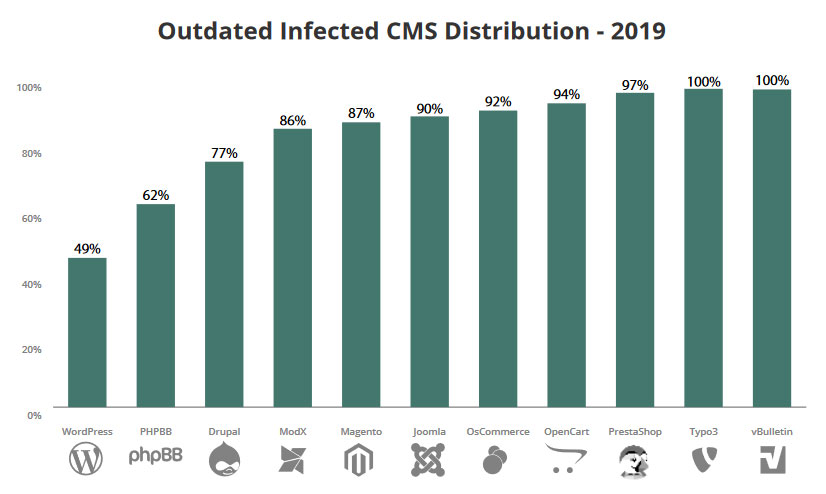
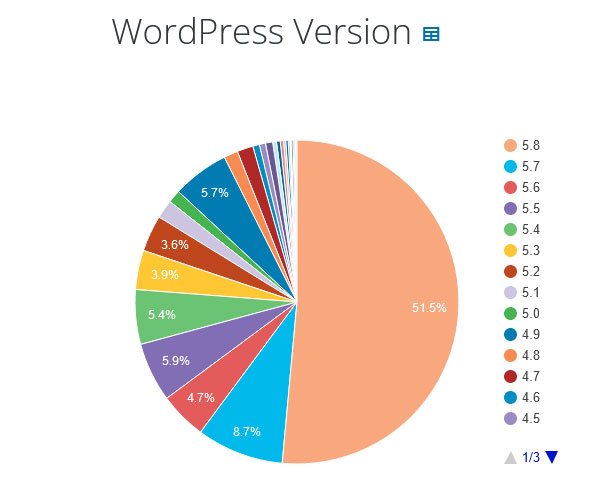
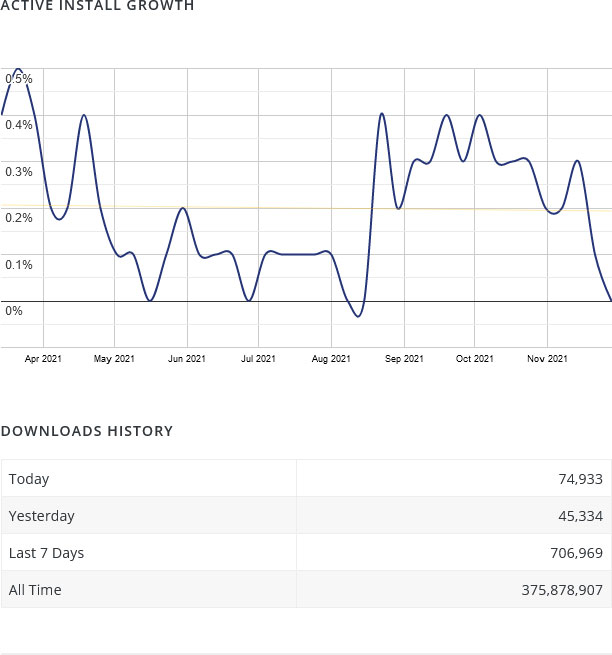

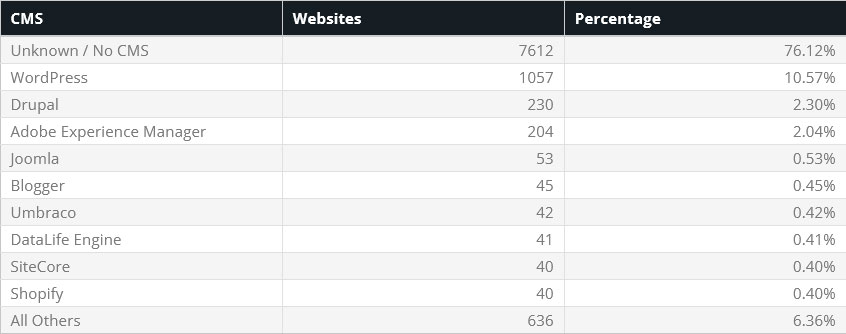
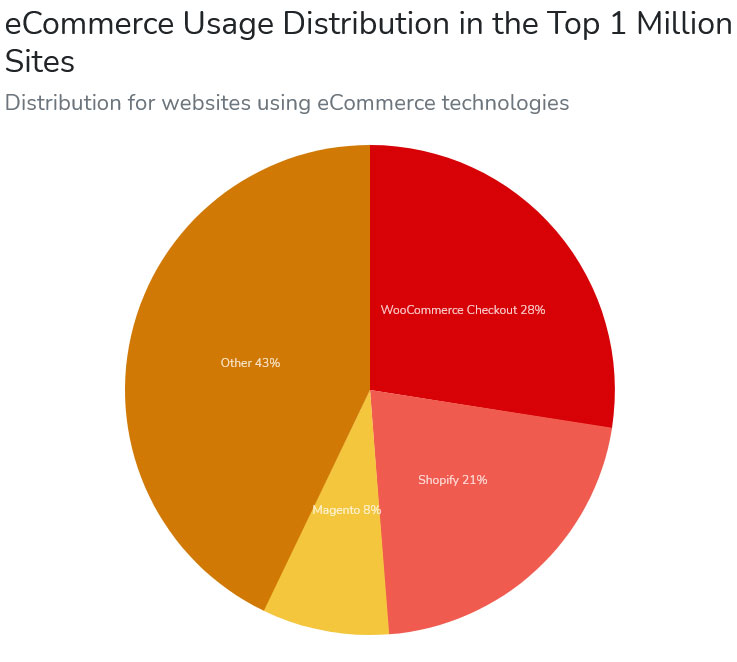
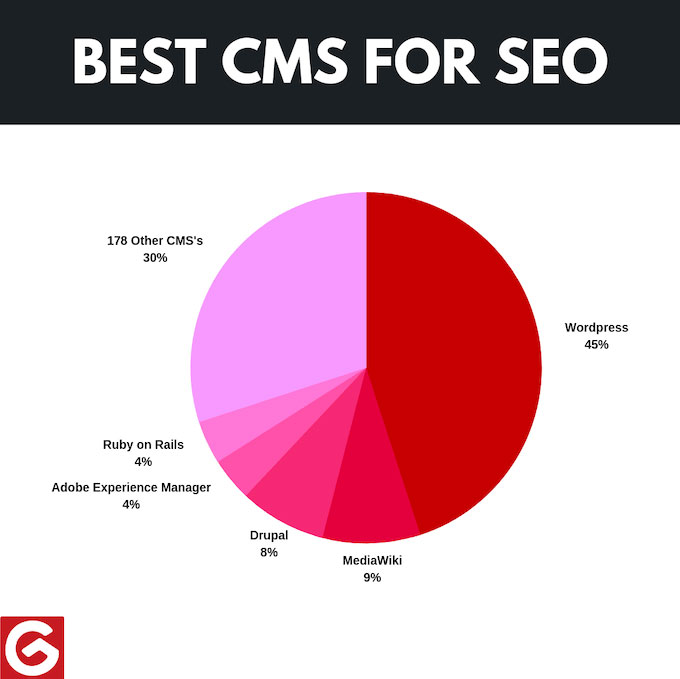
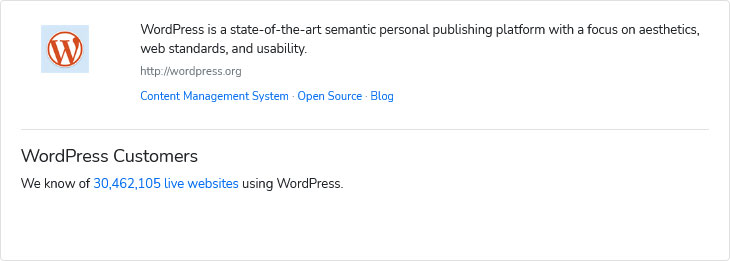
35 Comments